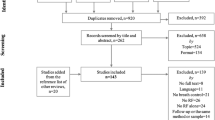Abstract
AAPB and its membership are faced with a number of giant challenges, including but not limited to: (1) the cost savings efforts of third-party payors and managed care organizations; (2) the lack of public awareness of biofeedback and its usefulness; and (3) the lack of sufficient research data on both the effectiveness and efficacy of biofeedback. In spite of these challenges, there are windows of opportunity that have been or which could be created to move biofeedback further into the realm of conventional treatment. We must focus our efforts on working together to: (1) create strategic plans for creating the future of applied psychophysiology and biofeedback; (2) educate all decision makers, including the general public; (3) establish better relationships with other professionals with common interests; (4) conduct more efficacy and effectiveness research; and (5) create a demand for our services so that the public will be more willing to pay for our services “out of their own pocket.” In order for this to happen, we must stop fighting with each other and direct our energies to productive activities that can change fantasies into realities.
Similar content being viewed by others
REFERENCES
Ackley, D. C. (1997). Breaking free of managed care: A step-by-step guide for regaining control of your practice. New York: The Guilford Press.
Azar, B. (February 1998). NIMH initiatives seek to improve children's mental health. APA Monitor, 29(2). 15.
Berman, B. M., Singh, B. K., Lao, L., Singh, B. B., Ferentz, K. S., & Hartnoll, S. M. (1995). Physicians' attitudes toward complimentary or alternative medicine: A regional survey. Journal of the American Board of Family Practice, 8, 351–366.
Chow, S. (1997). Final report on “HMOs and alternative medicine: A closer look” survey. Sacramento, CA: Landmark Healthcare.
Christy, J. H. (March 23, 1998). Prayer as medicine. Forbes, 136, 140.
Clay, R. A. (January 1998). APA's new president unveils his 1998 initiatives. APA Monitor, 29(1), 36.
Edwards, M. A. (1997). Stress management in wellness and public health. Biofeedback, 25(3), 10–14, 25.
Forsyth, L., & Filliben, A. (January 1998). Physicians report problems in finding mental health specialists for their patients. APA Monitor, 29(1), 6.
Keatley, M. A., & Colorado Biofeedback Providers. (September 1997). Outcomes in biofeedback. Presented at the Colorado AAPB Chapter Conference in Snowmass, CO.
Lundberg, G. D., Paul, M., & Fritz, H. (September 20, 1997). A comparison of the opinions of recognized experts and ordinary readers as to what topics a general medical journal should address. Presented at The International Congress on Biomedical Peer Review and Global Communications; September 20, 1997, Prague, Czech Republic.
Martin, S. (October 1997a). Partnerships are key to psychologists' success. APA Monitor, 28(10), 18.
Martin, S. (October 1997b). Outreach by psychologists garners respect for the field. APA Monitor, 28(10), 16.
McKee, M. G. (1995). Creating our future. Biofeedback and Self-Regulation, 20(4), 323–336.
Miller, E. E. (1997). Deep Healing: The essence of mind/body medicine. Carlsbad, CA: The Hay House, Inc.
Pennebaker, J. W. (1990). Opening up: The healing power of confiding in others. New York: William Morrow and Company, Inc.
State of Washington (1996). RCW 48.43.045, Every Category of Provider Insurance Law. Olympia, WA.
Sleek, S. (December 1997). The ‘cherrypicking’ of treatment research. APA Monitor, 29(12), 1, 21.
Sleek, S. (February 1998). Managed-care battle waged on capitol hill. APA Monitor, 29(2), 24.
Striefel, S. (Fall, 1997). Possible criteria for empirical validation of treatments. Biofeedback, 25(3), 2A, 12A.
Strosahl, K. (Summer, 1995). Behavior therapy 2000: A perilous journey. The Behavior Therapist, 18(7), 130–133.
Technology Evaluation Center Report. (1997a). Biofeedback for the treatment of hypertension. Chicago, IL: Blue Cross/Blue Shield.
Technology Evaluation Center Report. (1997b). Biofeedback in the treatment of urinary incontinence. Chicago, IL: Blue Cross/Blue Shield.
Wixon, A. V. (1998, February). Should you be the last to know...or the first? Sedona, AZ: Health Sciences Institute.
Author information
Authors and Affiliations
Rights and permissions
About this article
Cite this article
Striefel, S.“. Creating the Future of Applied Psychophysiology and Biofeedback: From Fantasy to Reality. Appl Psychophysiol Biofeedback 23, 93–106 (1998). https://doi.org/10.1023/A:1022120506031
Issue Date:
DOI: https://doi.org/10.1023/A:1022120506031




